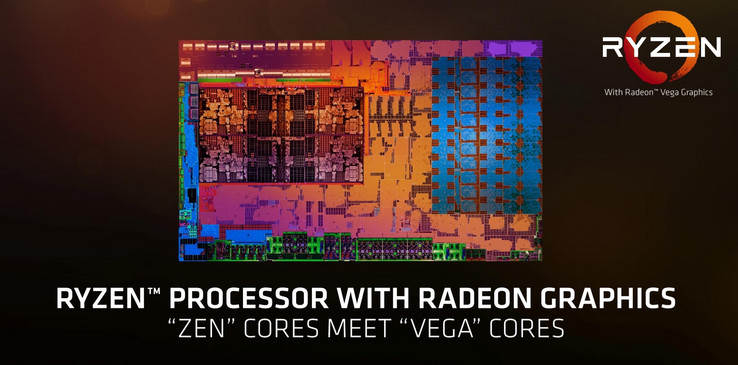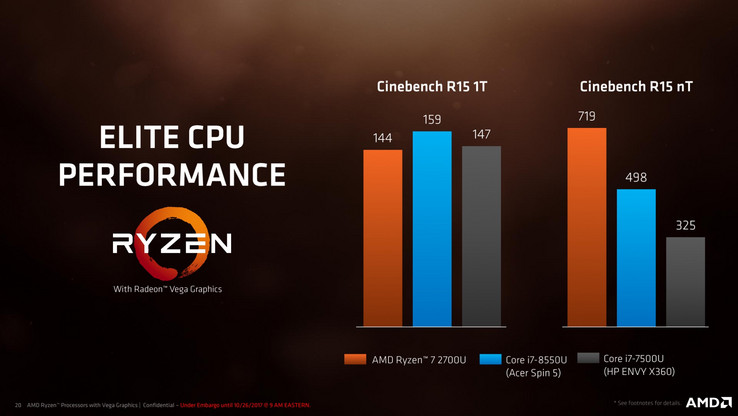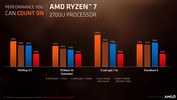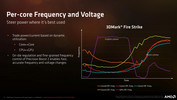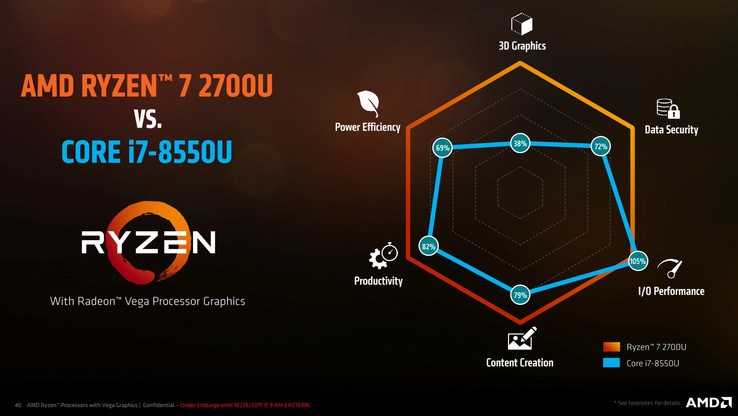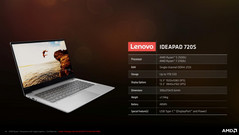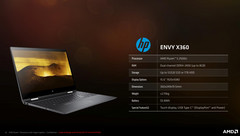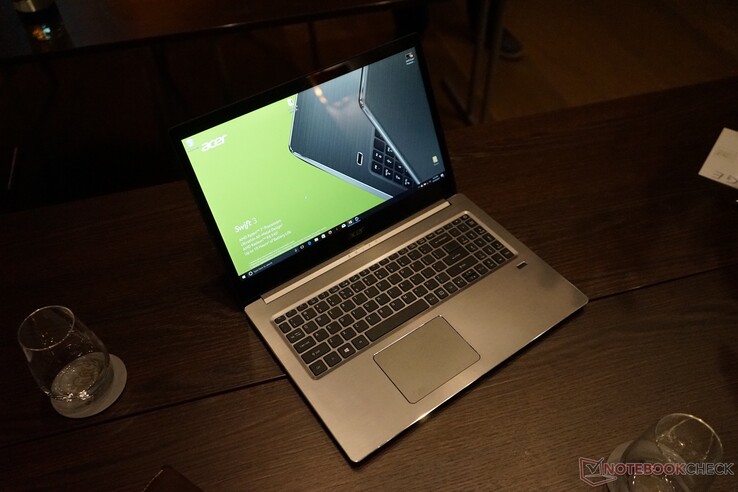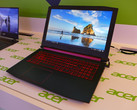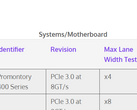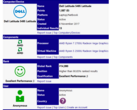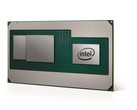AMD Ryzen Mobile (Raven Ridge) - Back to the Top?
AMD's new chips are competing with the new 8th Gen. quad-cores from Intel (Kaby Lake-Refresh). Raven Ridge starts with two 15 W APUs called Ryzen 5 2500U and Ryzen 7 2700U, which are direct rivals to the Core i5-8250U and Core i7-8550U. The predecessor Bristol Ridge is supposed to be beaten in all respects.
Tech facts
- 4 years in development
- 209 mm² die size
- 4.5 billion transistors
- 15 W models for launch, more to follow
- DDR4-2400 support
Ryzen CPU Cores
According to AMD, the CPU cores are identical to the desktop octa-core processors and have significant advantages, especially compared to the old Excavator modules in Bristol Ridge. A detailed description of the Ryzen architecture is available here. Mobile Ryzen also gets new features like Precision Boost 2 and Mobile XFR, which are optimized for 15 W scenarios.
Despite the 15 W classification, the four cores in the Ryzen 7 2700U are supposed to be much faster than the Core i7-8550U in Cinebench R15 Multi. AMD's presentation included results for the Acer Spin 5, even though the results are slightly lower compared to our benchmark results of the i7-8550U. The AMD chip is still ahead by some margin.
The Ryzen 5 can beat its direct rival Core i5-8250U as well, but the difference is not quite as impressive.
| Cinebench R15 - CPU Multi 64Bit | |
| Asus Zephyrus GX501 | |
| AMD Reference Platform | |
| Dell XPS 13 i7-8550U | |
| Acer Swift 3 | |
| Acer Aspire 5 A517-51G-80L | |
| Xiaomi Mi Notebook Pro i5 | |
| Acer Swift 3 SF315-51G-57E5 | |
| Acer Swift 3 SF314-52G-89SL | |
| Acer Spin 5 SP513-52N-566U | |
| Acer Spin 5 SP513-52N-566U | |
| Intel Reference i7-8650U 15W | |
| Lenovo ThinkPad T470s-20HGS00V00 | |
| Asus FX550IU-WSFX | |
| HP Envy x360 15z m6-ar004dx | |
The single-core result of the Ryzen 7 2700U is on par with the old Core i7-7500U and is beaten by the high Turbo clock of the i7-8550U. You can easily see the advantage over the old Bristol Ridge FX-9800P, which only manages half of the performance.
| Cinebench R15 - CPU Single 64Bit | |
| Intel Reference i7-8650U 15W | |
| Acer Aspire 5 A517-51G-80L | |
| Acer Swift 3 SF314-52G-89SL | |
| Dell XPS 13 i7-8550U | |
| Lenovo ThinkPad T470s-20HGS00V00 | |
| Asus Zephyrus GX501 | |
| Acer Spin 5 SP513-52N-566U | |
| Acer Swift 3 SF315-51G-57E5 | |
| Xiaomi Mi Notebook Pro i5 | |
| AMD Reference Platform | |
| Acer Swift 3 | |
| Asus FX550IU-WSFX | |
| HP Envy x360 15z m6-ar004dx | |
The performance seems to be very good for a 15 W chip in all the other listed benchmarks by AMD. Even the Ryzen 5 2500U is faster than the Core i7-8550U in POVRay, PCMark 10, and TrueCrypt 7.1a. Considering the better results in our database, the 2500U will probably be slightly slower than the i7, but the Core i5 could fall behind. Intel's processor only comes out ahead in PassMark 9; AMD obviously wants to show they did not only list benchmarks with favorable result for its own processor.
The performance looks very promising on paper, but we already know from Kaby Lake-R notebooks that the actual performance depends a lot implementation in the notebook. This is one aspect where AMD notebooks often fall behind, so we have to wait for test samples to make any statements.
Vega GPU
Unlike the Zen processor cores, AMD adjusted the integrated Vega graphics cores for the mobile implementation. However, the features are identical. Vega is based on the 5th generation Graphics Core Next architecture (GCN 5). The maximum number of CUs seems to be 10 (=640 shaders) and there are two APUs at launch with 10 and 8 CUs. The designation of the mobile GPU represents the number of CUs: AMD Radeon Vega 10 or 8, respectively.
The desktop Vega launch was not really convincing, especially in terms of efficiency. Older Radeon RX chips in the MacBooks (like Radeon Pro 555) on the other hand could compete with Nvidia GPUs (performance and consumption).
New features for Vega
- two FP15 commands can be executed simultaneously in the FP32 ALU
- improved IPC performance (Instructions Per Clock)
- new programmable Geometry Pipeline (2x Peak Throughput per Clock)
- Primitive Shader (new Shader Stage to discard hidden or unnecessary polygons)
- optimized for higher clocks
- High-Bandwidth Cache Controller (improved simultaneous utilization of all memory sources from HBM2, NAND, RAM, and SSD for large data sets)
- Tiled Rasterization (Draw Stream Binning Rasterizer)
- Direct3d Feature Level 12_1 (compared to 12_0 at Polaris)
The listed benchmarks show much higher scores for the Radeon Vega 10 in the Ryzen 7 compared to the Kaby Lake GT3e (Iris Plus 640, 3DMark Time Spy). The results is slightly behind the old Radeon Pro 450 (MBP 15 Entry 2016) and better than the Nvidia Geforce 940MX, but the gaming performance will most likely suffer a bit due to the missing dedicated VRAM.
| 3DMark - 2560x1440 Time Spy Score | |
| Acer Swift 3 SF315-51G-57E5 | |
| Apple MacBook Pro 15 2016 (2.6 GHz, 450) | |
| AMD Reference Platform | |
| Asus AsusPro P4540UQ-FY0056R | |
| A10-7850K Asus A88-XM-PLUS | |
| no name | |
| Microsoft Surface Laptop i7 | |
| Asus ZenBook Flip S UX370 | |
| MSI CX61 2QC 2970M MS-16GD | |
| HP EliteBook 725 G4 | |
Multimedia
Another bigger part of the APU is reserved for multimedia functions, but it looks like nothing changed compared to the previous model. The hardware is still ready for Netflix in 4K with HDR (but the launch drivers apparently not; the Playready certification is supposed to follow later). The APU also supports HDR, FreeSync 2, and 4K/60 Hz display.
AMD SenseMI
SenseMI is a collection of features including Pure Power, Precision Boost 2, Mobile XFR, Neural Net Prediction, and Smart Prefetch. Precision Boost 2, which can control the clocks in finer steps at 25 MHz, is a new feature for the mobile APU. These small steps are also possible for the Vega GPU.
Mobile XFR (mXFR) is another new feature, where the performance can benefit from good notebook cooling solutions (= longer Boost times). The surface temperatures of touch points (Skin Temperature) can be added into these calculations as well (similar to Bristol Ridge), but the notebook manufacturer has to work with AMD and add numerous sensors. This might be too much effort for inexpensive laptops.
Power Efficiency
AMD APUs as well as Intel SoCs use separate power rails for the power supply of processor and graphics card. This means there is a certain overhead for both components and there was a limitation for the overall performance. One shared rail (Unified VDD Power Rail) can reduce the maximum current requirements by 36% and still realize higher CPU & GPU peak currents (because full utilization of CPU and GPU is rare in practice).
The voltage regulators (vreg) are divided into two stages. First, there is the voltage regulator on the mainboard as well as numerous digital LDOs (Low Dropout Regulator) in a second stage, which can set voltage for the graphics card, CPU region, and also the CPU cores individually. They can also be used as power gates when the part is inactive, so individual processor cores can get different voltages and work more efficiently. Individual cores of the graphics card cannot be controlled (possible for individual CUs on the small Polaris chip), but 95% of the GPU can be deactivated to save power if there is no load.
Thanks to numerous efficiency improvements (and the smaller manufacturing process of 14 nm vs. 28 nm), AMD was able to improve the battery runtime significantly compared to Bristol Ridge. AMD advertises 26% longer runtimes in MobileMark 14 on the reference platform. The notebooks can also be slimmer thanks to a lower Z-height (-24% to 1.38 mm).
Overall, AMD believes the new Ryzen APUs have an advantage over Intel's Kaby Lake-Refresh chips. Intel only has the edge when it comes to the I/O performance (CrystalDiskMark for SSDs) and individual benchmarks. However, both the performance and efficiency of a notebook also depends a lot on the components. AMD often had problems to be used in good laptops in the past, and the efficiency often suffered from cheap components, and the SKUs with single-channel memory, poor TN displays, and slow hard drives have not been very attractive. The dual-graphics system with an additional dedicated GPU was another problem, because the driver support and therefore the performance was weak. However, Ryzen is supposed to be shipped without this hybrid Crossfire.
Notebooks at Launch
Mobile Ryzen APUs will launch in three devices (for the holiday season). The HP Envy X360 with Ryzen 5 2500U (and dual-channel RAM, contrary to leaks), the Lenovo IdeaPad 720S as a very slim system with Ryzen 5 2500U or Ryzen 7 2700U (but only single-channel DDR4-2133), and the Acer Swift 3. More laptops and APUs with higher TDP classifications (desktop?) will follow in 2018.




